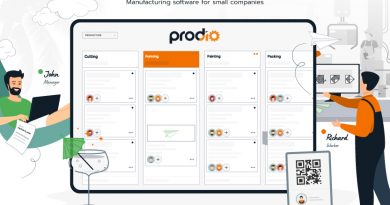9 Cybersecurity Approaches to Protect Against Insider Threats
While there are many external security threats and attacks such as network thefts that could pose a risk to your company and cause a security breach, no company is immune from its internal risks aka (also known as) insider threats.
According to a report, about 70% of organizations are experiencing insider attacks more frequently with 60% of them experiencing at least one insider attack in the past one year. While outsider threats remain the largest concern for organizations, insiders caused nearly 58% of healthcare breaches.
Since insiders, such as suppliers, employees, stakeholders, and partners are already in your organization’s trusted network, they can leverage their position and cause an insider attack that may cause severe damage to your organization.
Before we dive into how you can combat these insider threats, let’s take a closer look at what an insider threat is and how dangerous it can be.
What is an Insider Threat?
An insider threat is a form of security threat to an organization that originates from people or a person within the company itself.
These insides could be stakeholders, contractors, business associates, former employees, or employees who have access to sensitive information concerning computer systems, data, or security.
For instance, if an employee holds a grudge or appears to be dissatisfied, or if an employee starts to take on more tasks (related to a specific project or client) than usual, that could be an indication for foul play.
However, insider threats are not always intentional.
Often, the lack of security compliance or careless behavior of an employee could lead to an insider attack.
For example, sharing passwords with other employees, not locking their workstation properly, using weak passwords, etc.
Regardless of whether the attack is intentional or not, an insider attack could put your enterprise at risk making it vulnerable to malicious threats and security breaches.

Dangers of Insider Threats on Cybersecurity
A study showed that the average cost of an insider-related attack is about $513,000.
These attacks don’t just impact organizations financially but also pose other severe threats. In fact, about 90% of organizations feel vulnerable to insider attacks.
The top three risk factors enabling insider-related attacks consists of:
- Information technology complexity (35 percent)
- Endpoint access (36 percent)
- Excessive access privileges (37 percent)
Companies must understand that maintaining security is not the sole responsibility of the security team.
Instead, every person within an organization should be responsible for upholding security standards and ensuring compliance at all levels.
What are the dangers of insider threats?
- Identifying harmful actions can be difficult: Organizations usually trust their employees. Determining whether or not a person is an insider threat can often be tricky. When an employee is working with sensitive information, it can be difficult to determine if they’re simply doing their jobs or paving the way for something malicious.
- Confidential data can be leaked or breached: The most common impact of an insider attack is the exposure of confidential or sensitive business information. For instance, personal information such as names, email addresses, birthdates, or login credentials could be stolen by an insider to carry out harmful activities such as fraudulent bank transactions, identity theft, etc.
Top Cybersecurity Approaches to Protect Against Insider Threats
Insider threats can frequently be prevented and dealt with by a variety of methods.
How?
Here are some of the top cybersecurity approaches that can help you protect your data and organization against insider attacks:
1. Institute Better Oversight of Contractor Access
Third-party vendor or contractor access can often lead to severe damage within an organization.
Many times, they are given privileged access to sensitive information of organizations that may contain personal information of their clients, customers or employees.
Since these third-party vendors and contractors are not full-time employees, they frequently are not restricted by stringent security compliance policies as regular employees.
Further, companies often tend to not screen third-party vendors and contractors like employees, so malicious actors may be able to come in as contractors and carry out tasks that could harm the organization.
What can you do to prevent this type of attack?
To combat such threats, you need to implement better security policies and guidelines that limit the access of contractors and other third-party vendors while they are working.
Once the job is done, ensure that their access is automatically revoked to protect your data from insider threats. You can do this by setting an automatic deactivation date that is restricted in time so that when a project or task is over, the user access is revoked automatically.
Also, ensure that these contractors maintain the same accountability as your full-time employees when it comes to the security of your organization.
Higher-level executives such as managers must ensure that access privileges and rights are granted only to those contractors who need them to complete their job. Further, ensure that permissions are tightly restricted to just what they require to do their job.
2. Implement Security Awareness Training
What else can you do to prevent insider threats?
Hold security awareness training regularly to educate both full-time employees and contractors. Tell them to be more vigilant when it comes to suspicious activities that may lead to insider threats, such as a user having too many permissions, requesting too much information without the need to know, etc.
Every user must understand the best security measures and comply with the set security standards.
For instance, they should know how to distinguish between a legitimate and phishing email, and they must be vigilant to potential threats.
Organizations should consider implementing short, frequent training sessions to inform users about the latest security threats, government security mandates, and updated security protocols.
3. Network Monitoring
By network monitoring, you can track user activity, and detect if there’s a deviation from the regular credential use.
For instance, if you detect a user’s credentials being used to try to access an account or system that they usually don’t connect to or don’t require for their work, you can be alerted.
People usually work during a certain time period i.e. work hours, so if you notice an unusual time of activity, or multiple interactions during off hours, then it can trigger an alarm.
This can help you prevent insider threats due to the misuse of credentials.
Or, if you see multiple login attempts, you can quickly alert the user and block further attempts.
While these activities may not necessarily indicate an insider attack, they are worthy of investigation to ensure the user’s credentials have not been compromised and are not being misused.
By restricting a user’s individual access to the network and setting connection time/usage limits, you can ensure unauthorized access is no longer a possibility, even if credentials are compromised.
4. User Access Management
One of the most essential strategies to prevent insider attacks is user access management.
Organizations trust their employees and often give them access to sensitive information such as personal details, financial data, payrolls, credit card info, etc. in order to complete certain tasks.
While it might be necessary to provide access to your employees, you should continuously monitor their activity to ensure they are not misusing their access privileges.
To prevent insider threats and attacks, enterprises should determine and implement a least privilege model for all of their employees to ensure they have access only to information required to perform their jobs – no less and no more.
This can help prevent data loss by limiting unauthorized access to sensitive information.
5. Manage the Threat of Shared Passwords
Despite having stringent security policies in place, shared passwords continue to be one of the critical problems in cybersecurity today.
By using other people’s passwords, an attacker can gain unauthorized access to sensitive information and use it for their own purposes.
A study found that about 61% of people were more likely to share their work passwords than personal passwords. While many people are concerned about sharing sensitive passwords, they do it anyway because they think it’s necessary or convenient.
A shared password can easily wind up in the wrong hands.
Then what?
When you share your email password with someone, they have access to your inbox, can send emails as you, can derive banking information, and do more than just gain access to your inbox.
The best ways to prevent an insider attack due to shared passwords are to:
- Prevent concurrent logins
- Detect new device logins
- Limit multiple login attempts
- Detect any deviation from the usual behavior of a user
It is also important to hold regular training sessions and educate employees on how shared passwords pose a severe threat to the security of the entire organization.
Furthermore, make sure that employees understand that shared passwords could lead them to be responsible for any misconduct that happens using their credentials.
6. Offer Immediate Response to Suspicious or Disruptive Access Behavior
If you detect suspicious or disruptive access behavior, you should have an immediate response plan to prevent potential insider threats and protect your data.
What qualifies as suspicious or disruptive access behavior?
- A user attempting to access sensitive information that they do not require
- Multiple failed login attempts
- Unusual time of login from a new device
Since it’s difficult to monitor each and every user individually, you should consider using automated tools that help you monitor, analyze, and automatically block such suspicious user sessions.
What’s even more important?
The most critical part of dealing with suspicious or disruptive user behavior is how quickly you can block their access and prevent an insider attack.
An automated tool can help you monitor every activity of users, alert you in case of unusual behavior, and instantly block their access, thereby containing a potential insider attack.
7. Automate Enforcement of Security Policies
Whether they act accidentally or maliciously, employees can easily put their company at risk making it vulnerable to security breaches.
However, if you utilize a PAM solution, you can automate security policies to proactively help prevent insider attacks.
For instance, you can prevent your employees from downloading or opening attachments from unknown email senders and block the upload of company files to Google Drive or Dropbox.
To ensure the best security protocol, enterprises should monitor privileged user access to maintain extra vigilance.
Why?
To ensure that privileged users don’t further increase their system privileges, create new system rules, access sensitive information, open backdoor accounts, or edit system files or configuration.
8. Have a Digital IT Forensics Team Examine Security Breaches
If you suspect that your organization’s security has been compromised or breached, you potentially face a number of highly-technical and time-sensitive questions.
Many IT teams are equipped with tools and the knowledge to handle a security breach, however, many are also not prepared. They may not be trained in forensic investigation techniques or know how to look for a breach.
A digital IT forensics team can help you understand the scope of a breach and piece together what may have caused it.
They can help you get answers to significant questions such as:
- How did the breach occur?
- What were the size and business impact of the breach?
- How can you combat it?
A digital IT forensics team examines the network and looks for signs that indicate a lingering attack such as unauthorized user accounts or malware.
They can determine if a breach is still ongoing, and enhance the security of the organization by taking corrective measures to halt continuing damage.
Getting accurate information about user accounts or records that may have been breached can reveal many significant details about the breach.
It can help companies understand where their security policies are lacking, how they can strengthen their policies, and what caused the breach.
9. Use DLP and SIEMs for Better Coverage
Attaining as much security coverage as possible is important when evaluating a company’s network infrastructure.
This means that you need to choose a solution that offers a unified insider detection and data loss prevention feature set.
A real-time, responsive Data Loss Prevention (DLP) framework that flawlessly integrates with Security Information and Event Management (SIEM) can provide centralized insights into data management protocols and offer real-time monitoring and alert management systems for complete security coverage.
Wrapping it Up
In today’s cybersecurity landscape, it is more important than ever for organizations to protect themselves against insider threats.
Implementing the right security policies is one part of protecting your company, but monitoring and detecting suspicious activities that may lead to insider threats is just as critical.
Adopt the strategies mentioned above to protect your data against insider threats.



